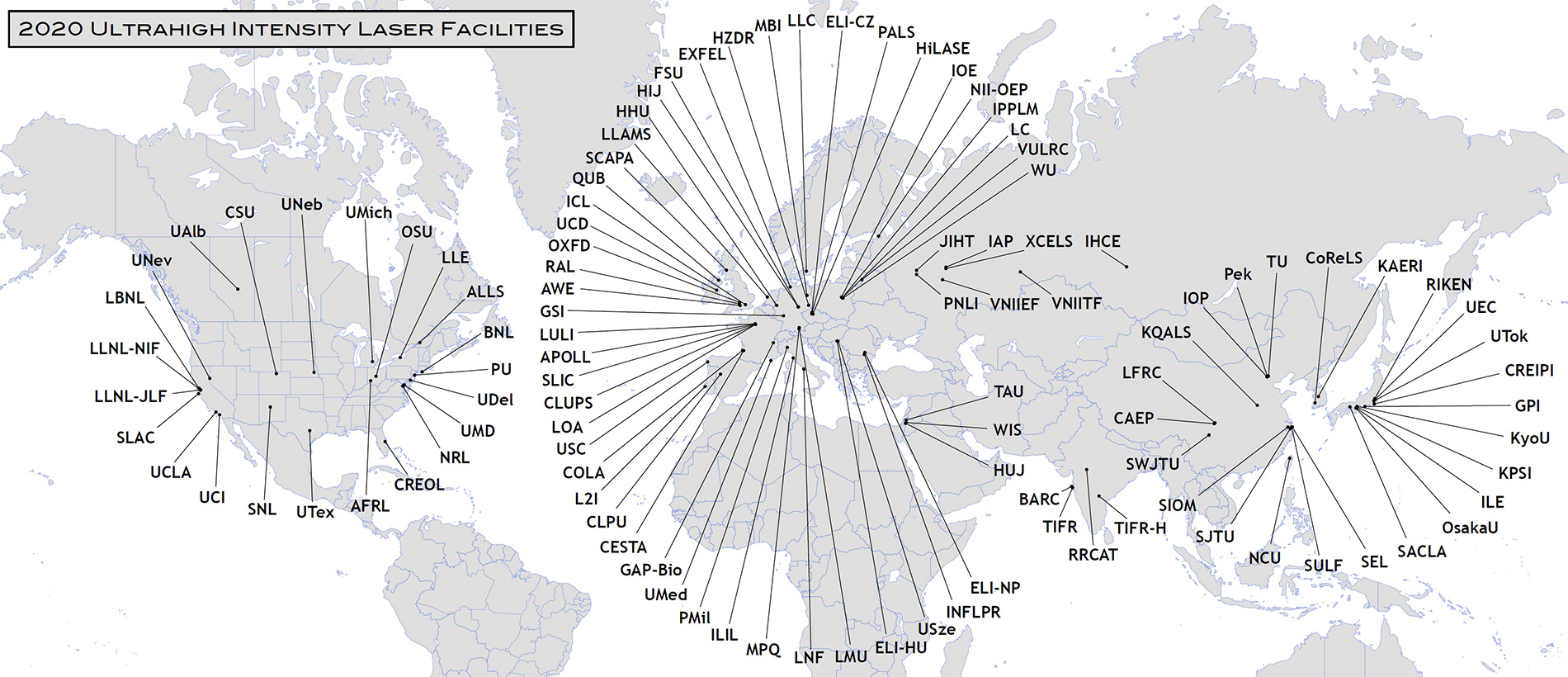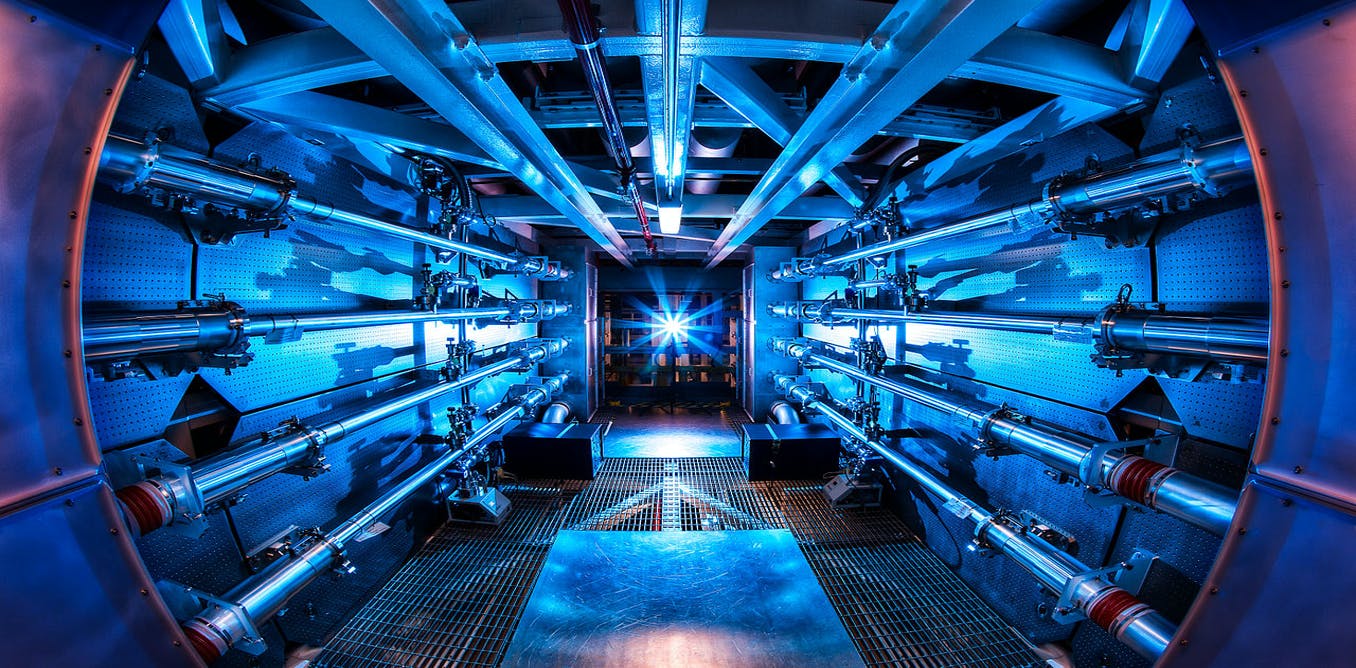High peak-power “Petawatt” lasers drive extreme light-matter interactions to generate plasmas and particle/photon jets with conditions of temperature, electric and magnetic fields strengths only otherwise found in extreme astrophysical events (centre of stars, supernova explosions, binary star accretion, edge of black holes). They have opened the field of high-energy-density physics, including many new opportunities for scientific research and applications, from compact particle accelerators to clean fusion energy generation. The significance of these opportunities led the inventors of the key technology behind high-peak-power lasers to win the 2018 Nobel Prize in Physics.
The international scientific community has embraced this opportunity with the establishment of many petawatt laser facilities around the world (Figure 1). Some are “mission-driven” – at the centre of international collaborations focussed on the world’s biggest scientific challenges, such as fusion energy generation. Facilities open to external users have seen demand far exceed laser time available and now have dedicated “network organisations” to manage them.

Unfortunately, there are no petawatt laser facilities in the southern hemisphere. This white paper proposes the establishment of such a facility in Australia which would undoubtedly be embraced by the Australian research community with key strengths in photonics, laser physics and laser engineering. It will also open the door to numerous opportunities for international collaborators, many of which were discussed during the preparation of this document.
Read full White Paper: The Case for Petawatt Laser Research Infrastructure in Australia

